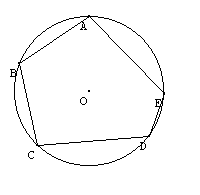Cercle circonscrit
On appelle cercle circonscrit à un polygone tout cercle passant par tous les sommets du polygone. Les polygones qui admettent un cercle circonscrit sont alors qualifiés d'inscriptibles. Un triangle est toujours inscriptible, et il possède un seul cercle circonscrit, dont le centre est donné par l'intersection des trois médiatrices. Par conséquent, un polygone inscriptible possèdera lui aussi au plus un cercle circonscrit. Tout polygone régulier est inscriptible, mais il existe des polygones qui ne sont pas inscriptibles.
 |
 |
 |
| Le cercle circonscrit à un triangle. | Un polygone inscriptible. | Un polygone non inscriptible. |
Recherche alphabétique
Recherche thématique








